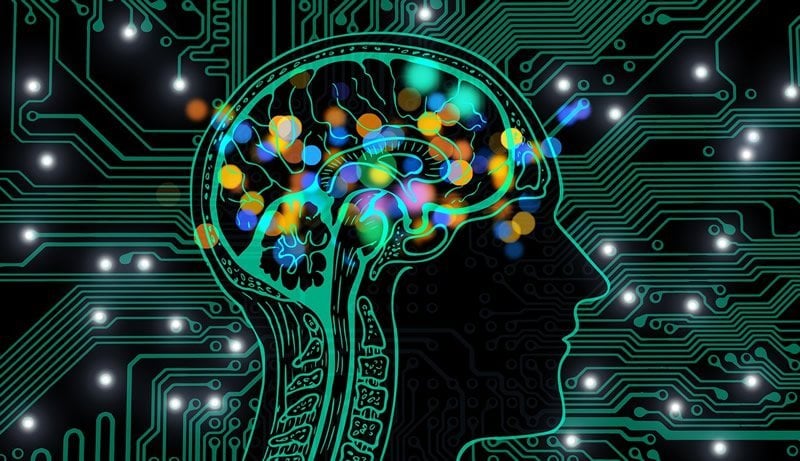Summary: Combining brain imaging data with a new machine learning algorithm, researchers can accurately predict the risk and determine a diagnosis for Alzheimer’s disease.
Source: Boston University School of Medicine
Researchers have developed a computer algorithm based on Artificial Intelligence (AI) that can accurately predict the risk for and diagnose Alzheimer’s disease using a combination of brain magnetic resonance imaging (MRI), testing to measure cognitive impairment, along with data on age and gender.
The AI strategy, based on a deep learning algorithm, is a type of machine learning framework. Machine learning is an AI application that enables a computer to learn from data and improve from experience. Alzheimer’s disease is the primary cause of dementia worldwide. One in 10 people age 65 and older has Alzheimer’s dementia. It is the sixth-leading cause of death in the United States.
“If computers can accurately detect debilitating conditions such as Alzheimer’s disease using readily available data such as a brain MRI scan, then such technologies have a wide-reaching potential, especially in resource-limited settings,” explained corresponding author Vijaya B. Kolachalama, PhD, assistant professor of medicine at Boston University School of Medicine (BUSM). “Not only can we accurately predict the risk of Alzheimer’s disease but this algorithm can generate interpretable and intuitive visualizations of individual Alzheimer’s disease risk en route to accurate diagnosis,” said Kolachalama.
The researchers obtained access to raw MRI scans of the brain, demographics and clinical information of individuals with Alzheimer’s disease and the ones with normal cognition from four different national cohorts. Using data from one of these cohorts, they developed a novel deep learning model to predict Alzheimer’s disease risk. They then showed that their model could accurately predict the disease status on the other independent cohorts.
An international team of expert neurologists were then asked to perform the task of detecting Alzheimer’s disease on the same set of cases. In this head-to-head comparison, the algorithm model performed slightly better than the average neurologist. They also showed that model-identified regions of high disease risk were highly aligned with autopsy reports of the brains on a few individuals who were deceased.
According to the researchers, this study has broad implications for expanding the use of neuroimaging data such as MRI scans to accurately detect the risk of Alzheimer’s disease at the point of care. “If we have accurate tools to predict the risk of Alzheimer’s disease (such as the one we developed), that are readily available and which can use routinely available data such as a brain MRI scan, then they have the potential to assist clinical practice, especially in memory clinics.”
The researcher believe their methodology can be extended to other organs in the body and develop predictive models to diagnose other degenerative diseases.
These findings appear online in the journal Brain.
Funding: This project was supported in part by the National Center for Advancing Translational Sciences, National Institutes of Health, through BU-CTSI Grant (1UL1TR001430), a Scientist Development Grant (17SDG33670323) from the American Heart Association, and a Hariri Research Award from the Hariri Institute for Computing and Computational Science & Engineering at Boston University, Framingham Heart Study’s National Heart, Lung and Blood Institute contract (N01-HC-25195; HHSN268201500001I) and NIH grants (R56-AG062109, AG008122, R01-AG016495, and R01-AG033040). Additional support was provided by Boston University’s Affinity Research Collaboratives program and Boston University Alzheimer’s Disease Center (P30-AG013846).
About this neuroscience research article
Source:
Boston University School of Medicine
Media Contacts:
Gina DiGravio – Boston University School of Medicine
Image Source:
The image is in the public domain.
Original Research: Open access
“Development and validation of an interpretable deep learning framework for Alzheimer’s disease classification”. by Shangran Qiu, Prajakta S Joshi, Matthew I Miller, Chonghua Xue, Xiao Zhou, Cody Karjadi, Gary H Chang, Anant S Joshi, Brigid Dwyer, Shuhan Zhu, Michelle Kaku, Yan Zhou, Yazan J Alderazi, Arun Swaminathan, Sachin Kedar, Marie-Helene Saint-Hilaire, Sanford H Auerbach, Jing Yuan, E Alton Sartor, Rhoda Au, Vijaya B Kolachalama.
Brain doi:10.1093/brain/awaa137
Abstract
Development and validation of an interpretable deep learning framework for Alzheimer’s disease classification
Alzheimer’s disease is the primary cause of dementia worldwide, with an increasing morbidity burden that may outstrip diagnosis and management capacity as the population ages. Current methods integrate patient history, neuropsychological testing and MRI to identify likely cases, yet effective practices remain variably applied and lacking in sensitivity and specificity. Here we report an interpretable deep learning strategy that delineates unique Alzheimer’s disease signatures from multimodal inputs of MRI, age, gender, and Mini-Mental State Examination score. Our framework linked a fully convolutional network, which constructs high resolution maps of disease probability from local brain structure to a multilayer perceptron and generates precise, intuitive visualization of individual Alzheimer’s disease risk en route to accurate diagnosis. The model was trained using clinically diagnosed Alzheimer’s disease and cognitively normal subjects from the Alzheimer’s Disease Neuroimaging Initiative (ADNI) dataset (n = 417) and validated on three independent cohorts: the Australian Imaging, Biomarker and Lifestyle Flagship Study of Ageing (AIBL) (n = 382), the Framingham Heart Study (n = 102), and the National Alzheimer’s Coordinating Center (NACC) (n = 582). Performance of the model that used the multimodal inputs was consistent across datasets, with mean area under curve values of 0.996, 0.974, 0.876 and 0.954 for the ADNI study, AIBL, Framingham Heart Study and NACC datasets, respectively. Moreover, our approach exceeded the diagnostic performance of a multi-institutional team of practicing neurologists (n = 11), and high-risk cerebral regions predicted by the model closely tracked post-mortem histopathological findings. This framework provides a clinically adaptable strategy for using routinely available imaging techniques such as MRI to generate nuanced neuroimaging signatures for Alzheimer’s disease diagnosis, as well as a generalizable approach for linking deep learning to pathophysiological processes in human disease.
Feel Free To Share This Artificial Intelligence News.







